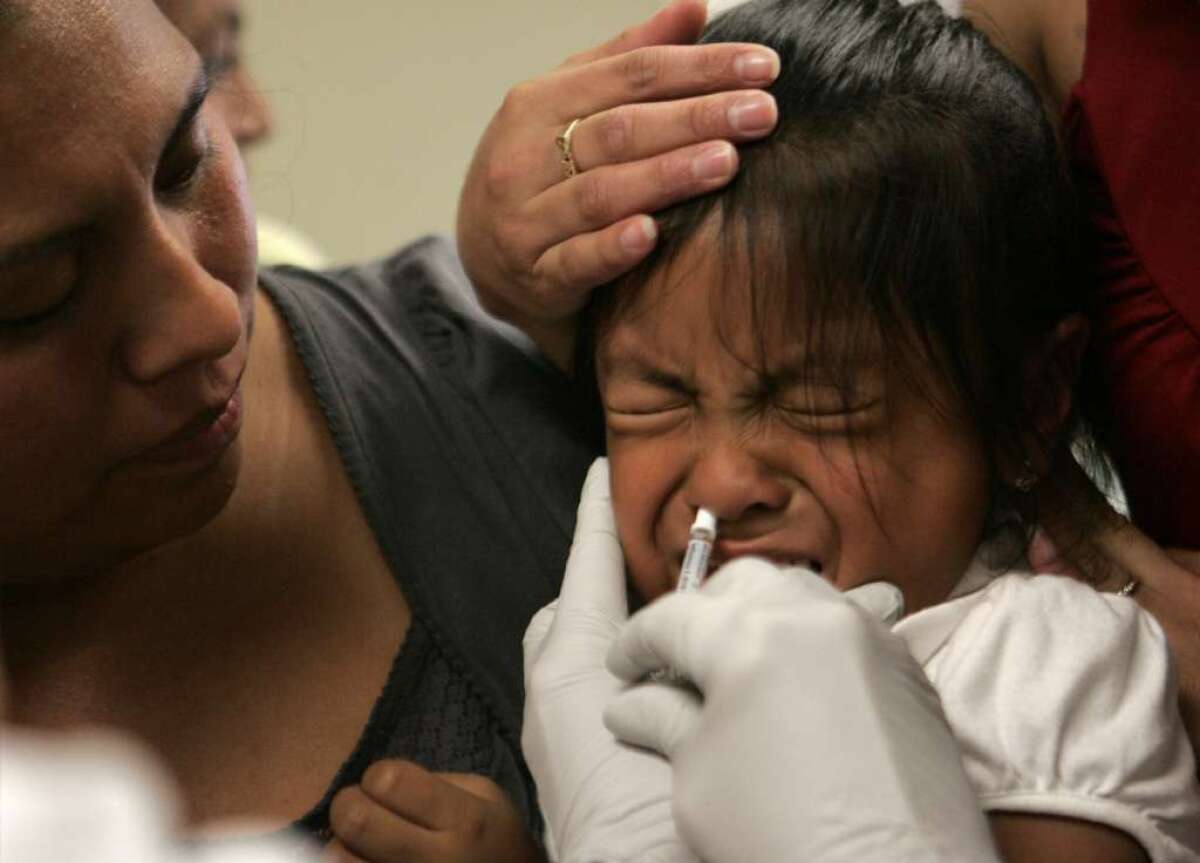Influenza can kill a healthy child in a matter of days, study finds

- Share via
Even healthy children can come down with a case of the flu severe enough to cause death in a matter of days, according to a new report from researchers at the U.S. Centers for Disease Control and Prevention.
In fact, children who were in good health before contracting influenza seemed to progress from infection to death more rapidly than children with high-risk medical conditions, the researchers reported in a study published Monday in the journal Pediatrics.
The finding is based on the first-ever analysis of all flu deaths among children since the National Notifiable Diseases Surveillance System began tracking such cases in October 2004. In the eight years through September 2012, there were 830 laboratory-confirmed deaths due to the flu – an average of just under 104 per year.
In 794 of those cases, the researchers were able to check the patients’ medical histories. They found that 341 of those victims – 43% – did not have a medical condition that would have made them more vulnerable to influenza.
It may sound like a scare-mongering message, but public health officials take influenza seriously because it’s easy for people to reduce their risk of infection by getting a flu shot. CDC officials reported last month that 43% of children weren’t vaccinated during the 2012-13 flu season, along with 58% of adults.
The researchers were able to find the vaccination records for 511 of the children in the study. Only 16% “had been fully vaccinated with seasonal influenza vaccine,” they reported.
To put the 104 annual flu deaths into perspective, the CDC said there were 9,595 deaths among children ages 1 to 14 in 2010. Accidents, congenital malformations and cancer were among the leading causes of death.
But getting back to the flu: Researchers in the CDC’s Influenza Division and its Epidemic Intelligence Service discovered that between 2004 and 2012, the median age of fatal flu victims was 7. Among cases where place of death was recorded, 65% died after being admitted to a hospital, 18% died while being treated in an emergency room and 16% were not in a hospital.
Slightly more than half of the victims – 53% – were boys, 45% were white, 23% were Latino, 18% were African American, 4% were Asian American, 2% were Native Americans or Alaska natives, and 1% were Native Hawaiians or Pacific Islanders.
The deadliest flu season for children was in 2009-10, with 282 deaths (or 3.8 deaths per 1 million children). That flu season began a few months after the H1N1 “swine flu” was identified in the United States, and pediatric deaths peaked in October 2009.The most benign flu season of the study was the most recent. Only 35 children died of the flu in 2011-12, the researchers found.
Among victims who had a high-risk medical condition before they got the flu, neurological disorders were the most common, followed by pulmonary disorders (including asthma), chromosomal or genetic conditions, and congenital heart disease or other forms of cardiac disease.
Pneumonia was the most common flu complication reported among the children who died, with 51% of them affected. Other types of bacterial infections included Staphylococcus aureus and Streptococcus pyogenes.
Among Americans of all ages, the death rate from flu ranges between 3,000 and 49,000 annually, according to the report.
If you’re interested in the latest medical news, you like the things I write about. Follow me on Twitter and “like” Los Angeles Times Science & Health on Facebook.
ALSO:
45% of Americans got a flu shot last year; CDC says we can do better
Flu shots may reduce risk of heart attacks, strokes and even death
Heat waves could be predicted weeks in advance, study finds







